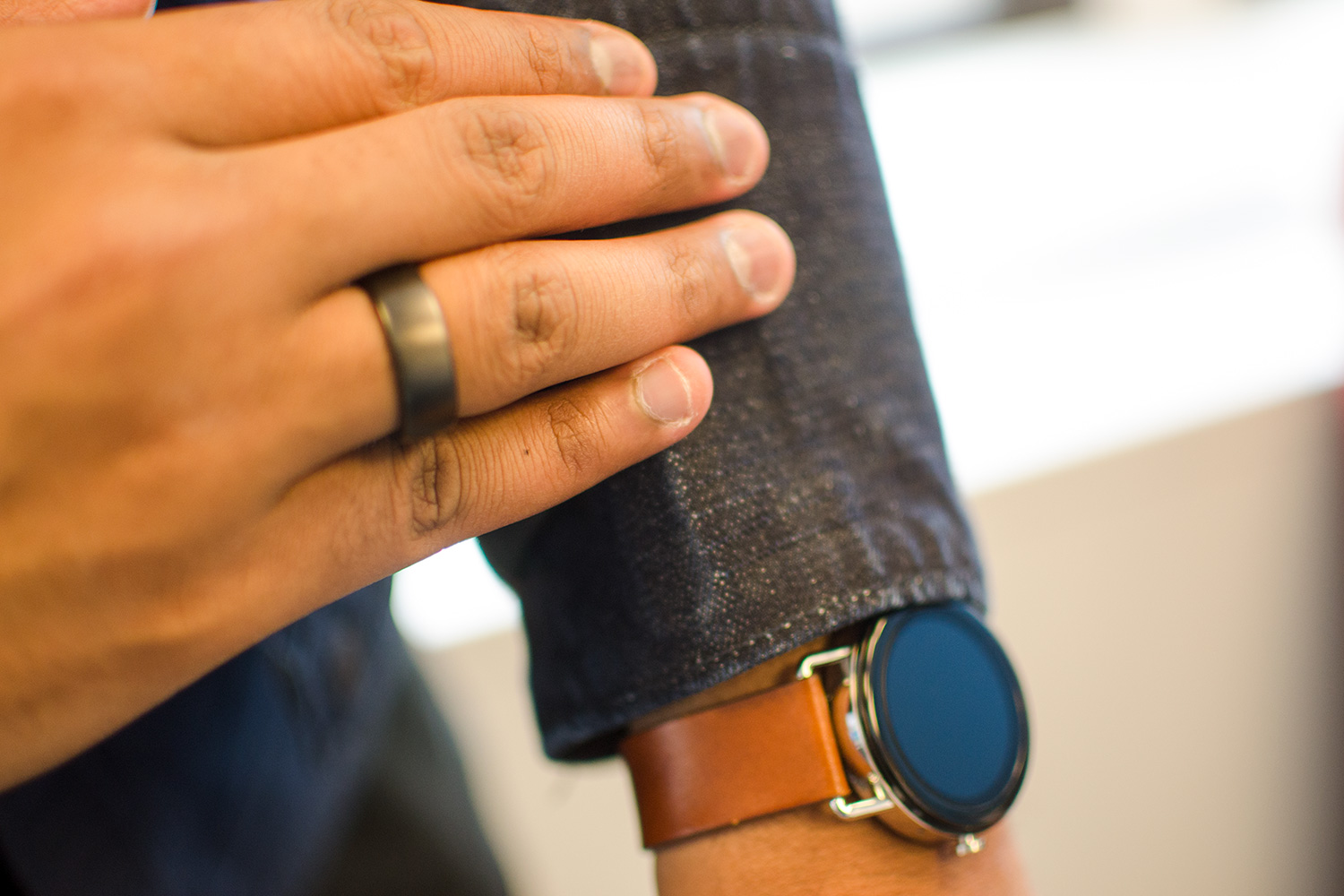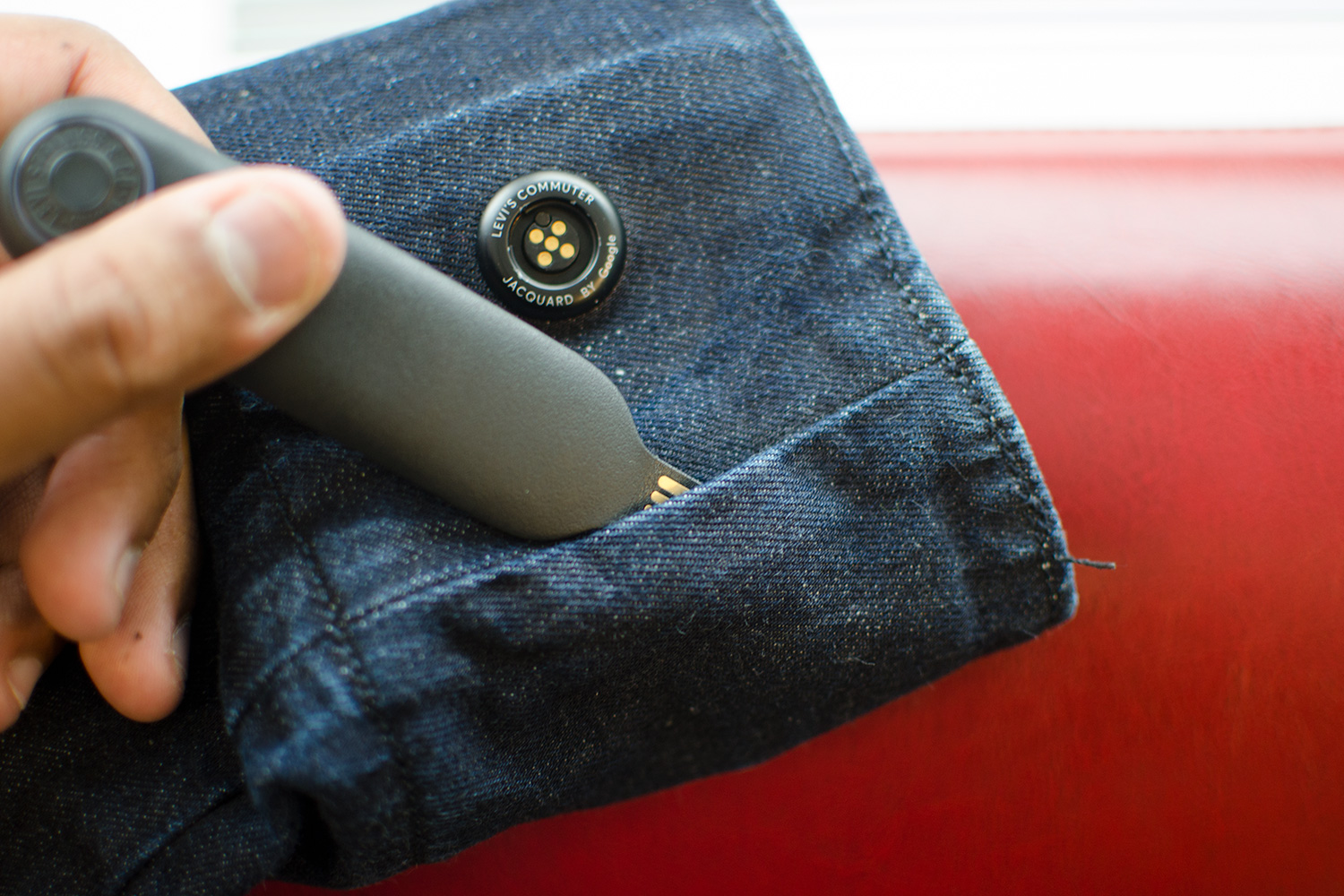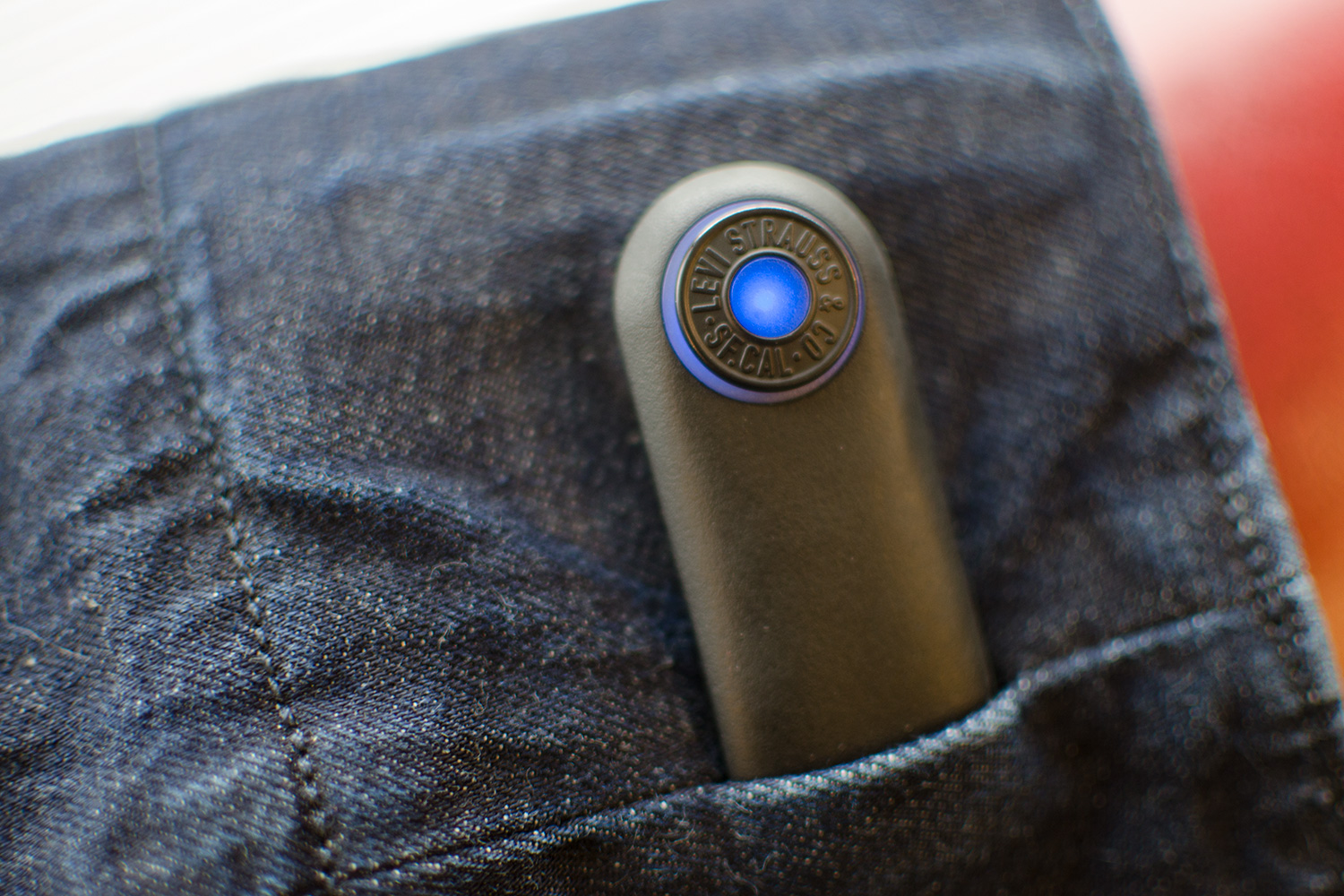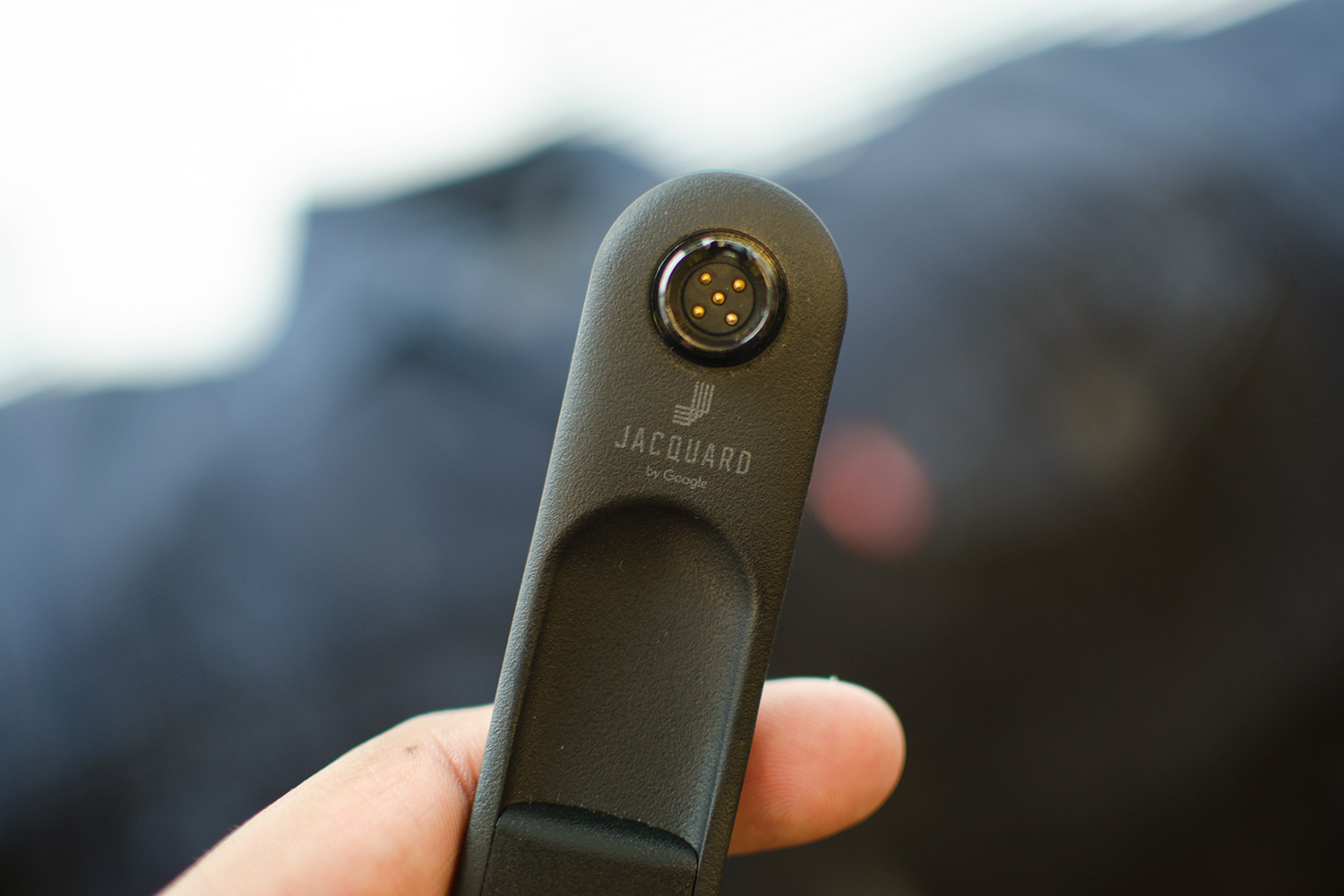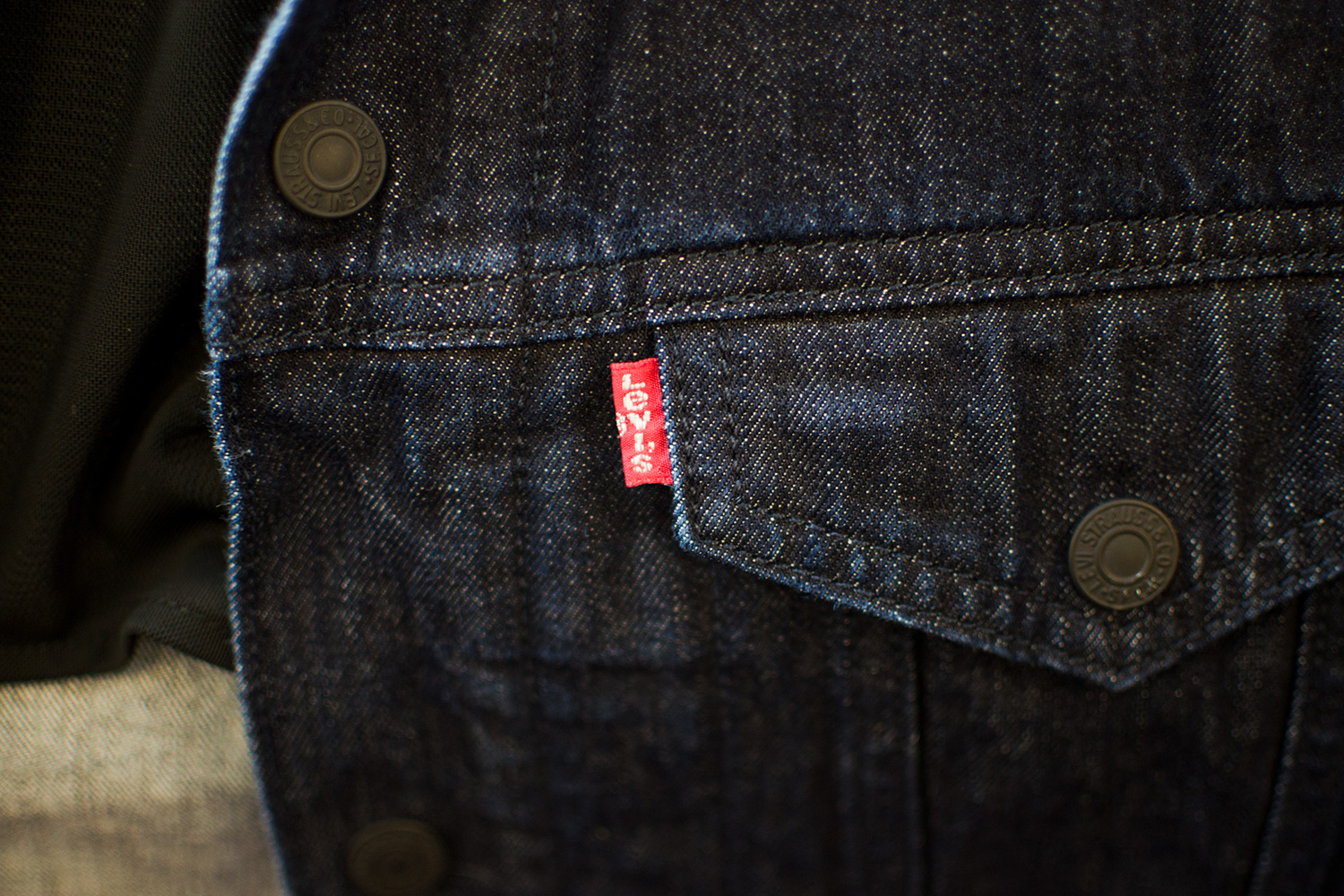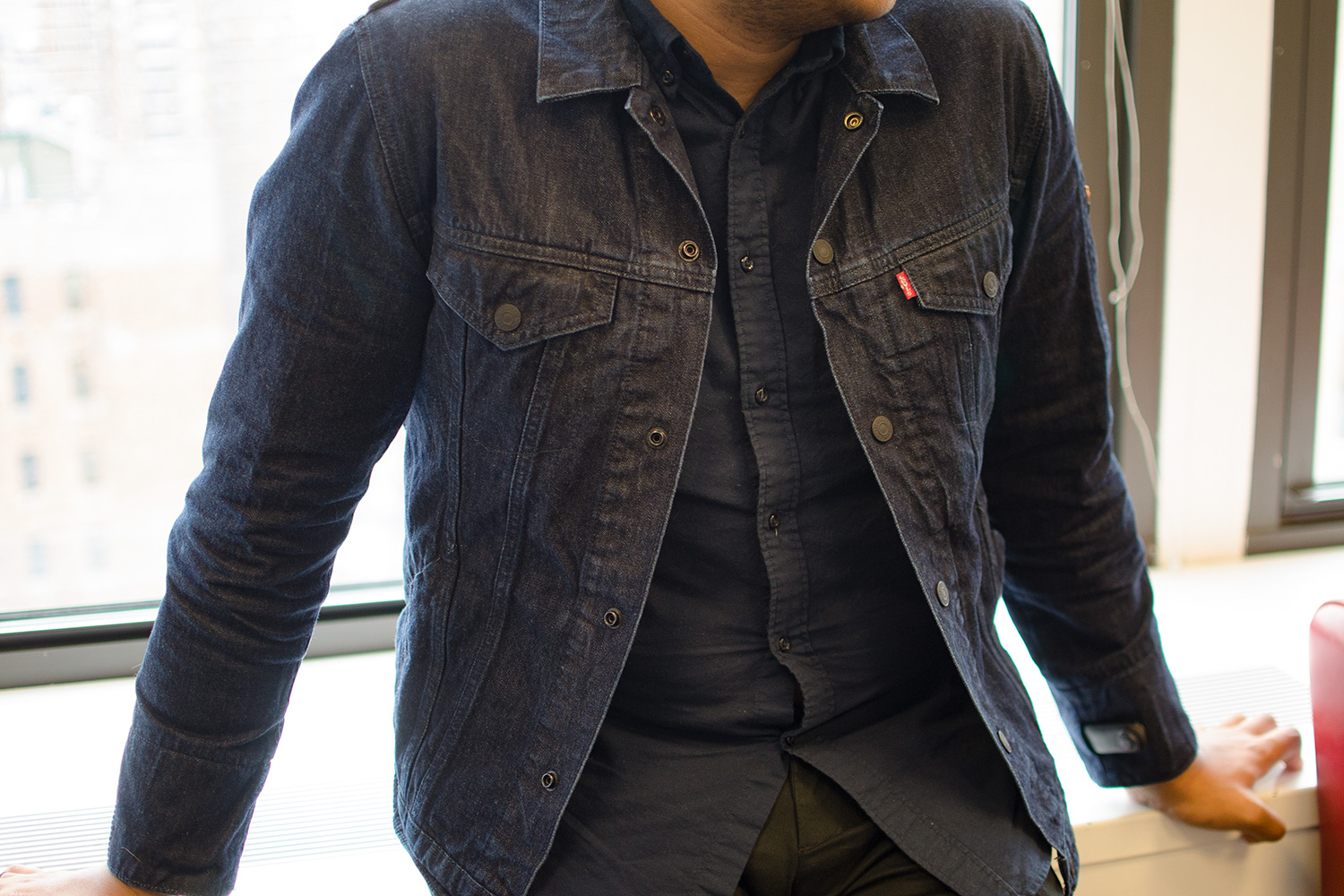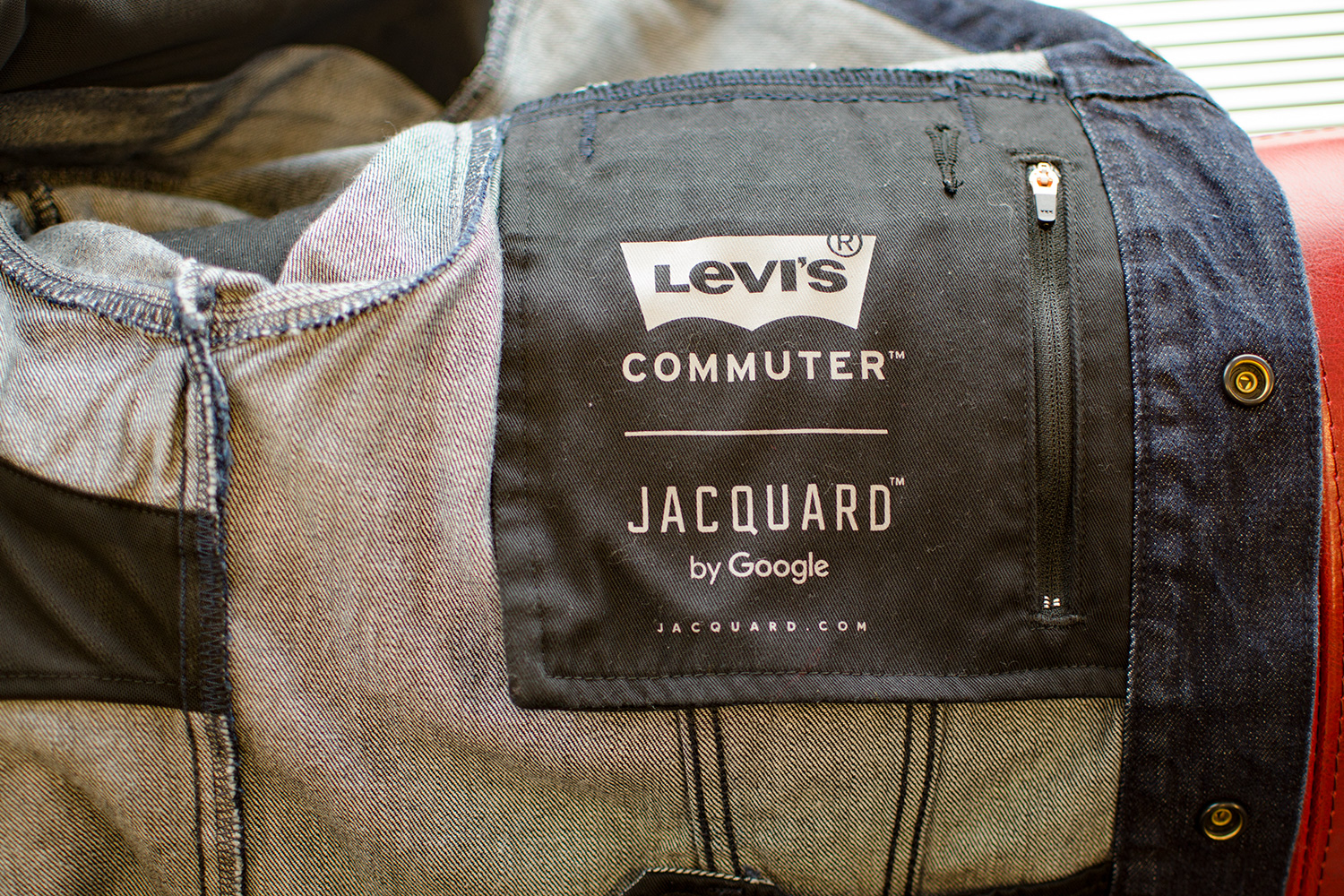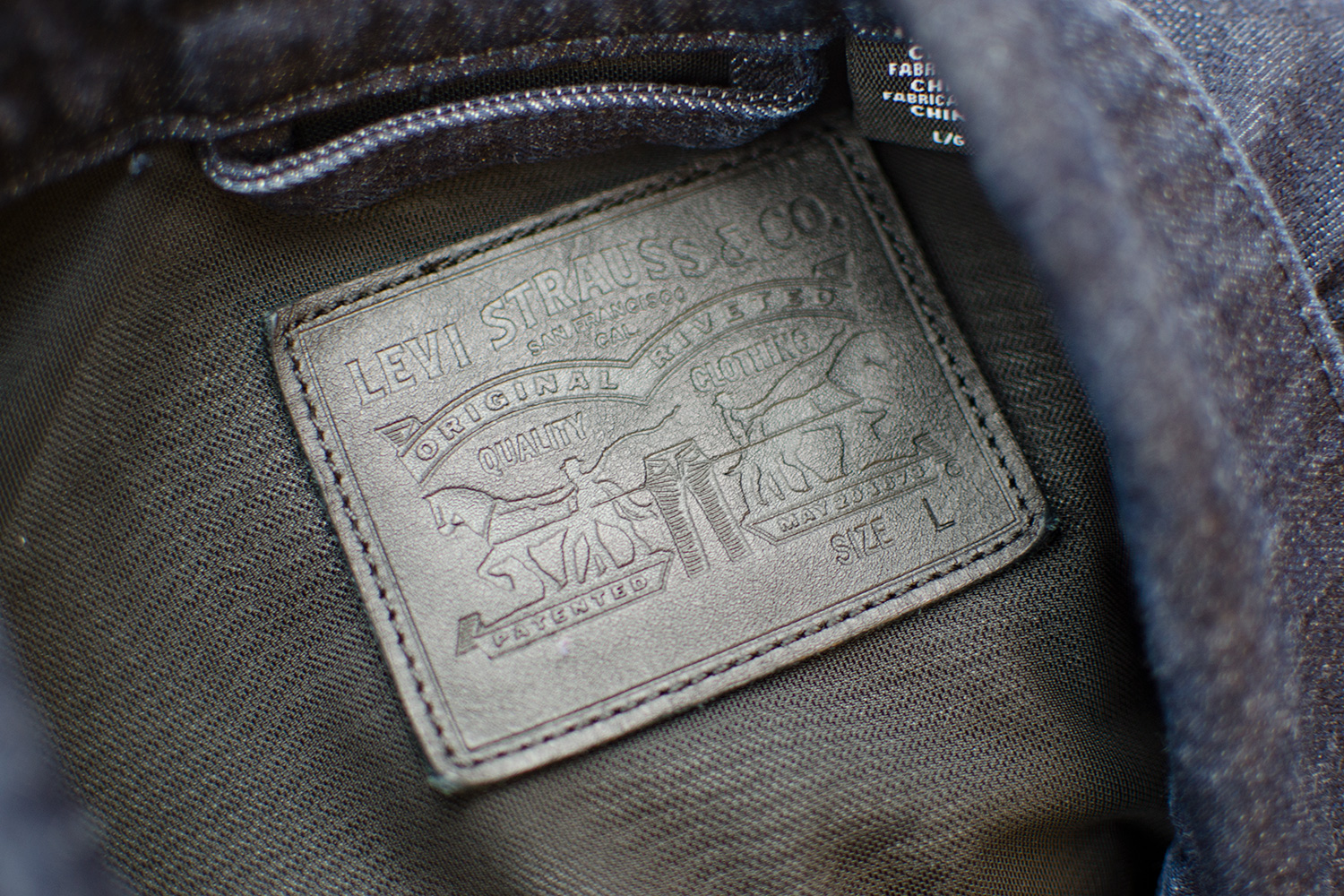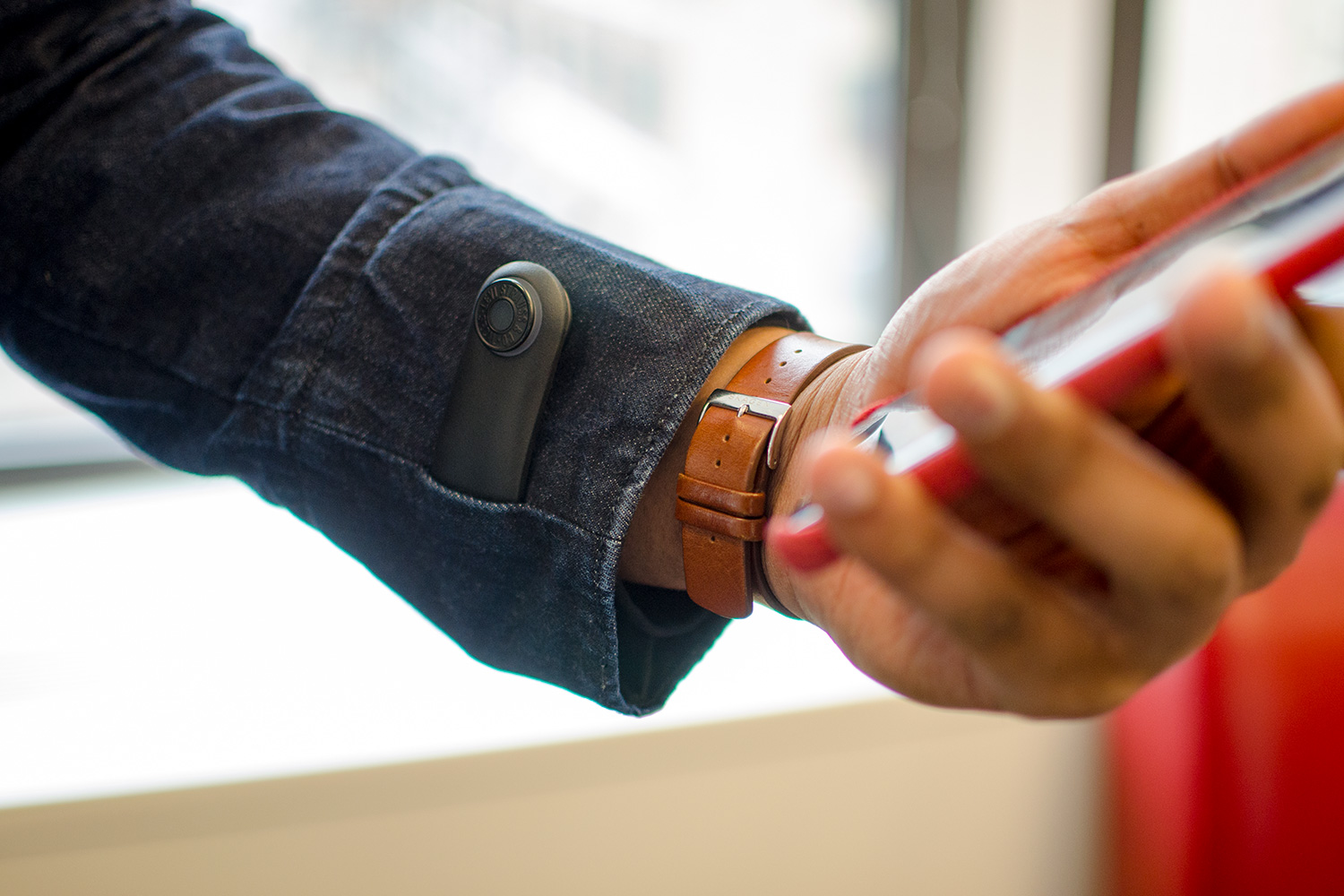When we first saw Google unveil Levi’s new connected jacket, back in 2015, we immediately thought of the Burton Amp. The Amp, announced in 2003, was a winter jacket developed by Burton and Apple that allowed snowboarders or skiers to control their iPods using a control panel on the sleeve. With a wire connecting the control panel and iPod, Apple called it “the world’s first and only wearable electronic jacket with an integrated iPod control system.”
Fifteen years have passed, and while the iPod had an amazing run, the jacket didn’t. There have been other attempts at making “smart clothing,” but the concept never took off with consumers. Was the idea just way too ahead of its time?
There have been other attempts at making “smart clothing,” but the concept never took off with consumers.
Google thinks now is the right moment to revisit the concept, apparently, with the Levi’s Commuter Trucker Jacket with Jacquard by Google, a collaboration between the iconic denim maker and tech giant. The name is a mouthful, but it refers to a research project, Jacquard (named after a fabric made on a loom), that was born out of of Google’s Advanced Technology and Projects division. Unlike what we can now consider a glorified iPod remote that Burton and Apple made, the Levi’s jacket connects wirelessly with an iOS or Android phone and uses gesture-based controls and haptic feedback to perform a variety of smartphone functions, from navigation to, yes, controlling your music.
Is this the connected jacket the world’s been waiting for? Well, we may need to wait a bit longer, as the capabilities may seem a little limited at the moment. But, Jacquard technology and the Levi’s Commuter Trucker Jacket are more of a technical showcase of what’s possible when you weave technology with clothing — and the result is undeniably exciting.
The tech
The cuff on the left arm is woven with a conductive fiber, as well as a special-grade polyester that allows it to act as a touch sensor; the rest of the jacket is traditional Levi’s cotton-based denim. You can feel a slight difference in material when you touch the denim part of the jacket, and then touch the cuff. It’s not easily noticeable, though, which is important to maintaining a traditional look.
The touch sensor physically connects with the Jacquard tag, which you snap into place. The tag is quite large because it houses a lot of necessary components, such as a haptic motor, the LED, a motion sensor, Bluetooth, as well as the battery to keep it all alive. Once it’s all connected and paired to your smartphone via the Jacquard app — a quick and easy setup process — you can use a handful of touch gestures on the cuff to control actions on your
The tag has a battery, so yes, that means you technically have to charge your jacket. It’s an easy process, as all you have to do is take the Jacquard Tag off the jacket and plug it into a USB-A port, like the one in your laptop or desktop computer, or most power adapters. Charging it up to full doesn’t take more than an hour, and the jacket is able to stay powered for up to two weeks — more if you don’t wear it daily. The motion sensor detects when it’s not being worn, and it puts the tag in a low-power state to save battery.
A genuinely helpful jacket
The jacket isn’t meant to replace your smartphone, Ivan Poupyrev, director of engineering at Google’s Advanced Technology and Projects (ATAP) division, told Digital Trends. Instead, Poupyrev thinks it’s the “next frontier in connectivity,” which will take place in the physical world with the things we wear.
It’s the ‘next frontier in connectivity’
Think of it like a smartwatch. We wear watches so it’s easy to tell the time, and as a fashion statement. Any additional smarts, such as notification alerts, are largely present to accent our connected experience. With the Jacquard Commuter Jacket, you can do things like control music playback, ask for the next direction (and the ETA) while using a navigation app, find your phone, and more — helpful functions that are seamlessly embedded into our clothing so we don’t need to disrupt our attention by pulling out a smartphone.
These functions are controlled by three gestures using the cuff on the jacket: Brush in (swiping on the tag toward you), double tap, and brush out (swiping on the tag away from you). You can assign one ability to each gesture, which means you’ll have to choose carefully — or you can open the app and change your configurations each time to tailor the experience to your outing.
Having used the jacket for several months, I’ve predominantly used it to control music playback (with earbuds plugged into my smartphone). A double tap on the cuff tells me what song is playing, a brush in pauses the music, and a brush out plays the next track. The gestures work perfectly, and it doesn’t feel awkward or strange to use them. The only downside is that I often have to open the music app (or make sure it’s open in the background) for these gestures to start playing anything. There are also a few times when the jacket’s cuff registered my accidental swipes, but I’ve only noticed this happening when taking off the jacket.
The other abilities are certainly handy, especially the navigation-specific ones when you’re commuting. Use a gesture to find the estimated time of arrival to your destination, or what the next direction is on your route. Imagine driving or biking and not having to at a screen and take your attention away from the road.
The biggest problem is that you can only set three abilities at once, as I wound up losing a desire to change my configurations each time I donned the jacket. Poupyrev said the Jacquard team originally thought of adding “sets” you could cycle through. So for example, you could cycle through to your commuting “set” of gestures on your way back from work, and then maybe swap to your music set to control playback. They ended up not going with this method, as they found people often forgot what set they were currently using. I ended up sticking with my music control configuration all the time, but I’d prefer cycling through sets to access various abilities on the go. I’m crossing my fingers for this feature to come in a future update. Or, Google could embed a tiny display or Indicator LEDs in the next version — if there’s a second version.
Controlling music and navigation with simple gestures may sound unimpressive, but it’s genuinely helpful.
Aside from the limited number of abilities you can set, the other issue is charging the tag. It’s easy to do, but I’ve occasionally run into the problem of realizing the tag is dead right as I’m about to head out. At that point, I just resign to wearing it as a traditional jacket, and charge the tag while I’m away. It’d be nice if we didn’t need to charge the jacket at all — say, if it charged itself through kinetic or solar energy — but that all might be a stretch. A simple solution is to stash a small USB portable battery in one of the pockets.
Controlling music and navigation with simple gestures may sound unimpressive, but it’s genuinely helpful. It allows you to not think as much about menial tasks, and helps you keep going without missing a beat. That’s the goal of wearable technology, at least according to Google. The Jacquard Commuter Jacket succeeds in that regard.
A close to perfect weave
How does the jacket look and fit? The Levi’s Commuter Trucker doesn’t look much different from other commuter jackets from the denim brand. Our review unit (size large) fits well, with ample room for pockets, as well as subtle reflective tags on the back to alert drivers in case you are biking.
The cuff is what gives the jacket away, specifically when the tag is attached. Google said it’s likely this will get miniaturized as the technology gets better, and we can’t wait for the tag to blend in more with future products. Why? Because the tag resembles the theft-prevention security tags that retail stores attach to clothing, people constantly asked me if I stole the jacket (luckily, it has not embarrassingly triggered any security sensors at shops).

Fortunately, one comment I seem to always get is, “That looks good on you.” That’s a great compliment because it means it’s stylish, and it won’t make you look like a geek.
You can wash the Commuter Jacket, though Google warns that there’s a chance that the cuff may stop responding to touch after more than 10 washes. It’s a denim jacket, so you hardly ever need to throw it in the laundry — if you do, you only have to remember to take the tag off. I washed the jacket once already and didn’t find any problems with the cuff or fit afterwards. (Of course, denim purists would either never wash it, hand-wash it, or dry clean it once in a blue moon. Our sibling site, The Manual, has a guide on that.)
It’s the perfect lightweight jacket for the spring season. Though we did the bulk of our testing during the winter, and the jacket still managed to work as an extra layer under or over other clothing.
Price and availability
The Levi’s Commuter Jacket with Jacquard technology will set you back $350, and it’s available now for women and men. The dumb version of the jacket — without Jacquard — costs about $150.
It’s pricey, yes, but this is largely an early-adopter product. It’s the first version of the technology available, and we’ll likely see this Jacquard technology expand into other types of clothing at hopefully lower prices. If anything happens to the technology over time, at least you’ll still look fabulous.

